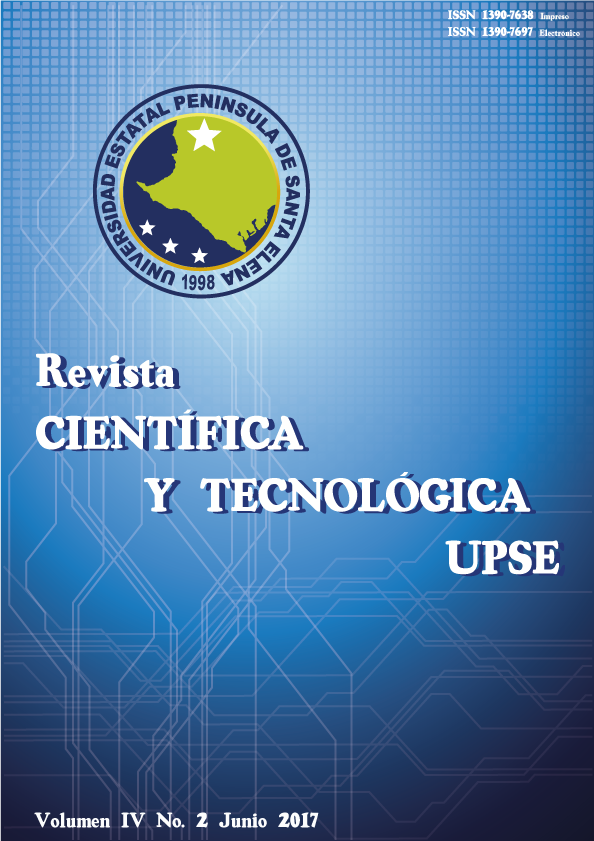Control de Velocidad de un auto empleando Sistemas Difusos
DOI:
https://doi.org/10.26423/rctu.v4i2.270Palabras clave:
Inteligencia Artificial, Sistemas Difusos, Lógica difusa, Inferencia de Mandani, Reglas de Inferencia, Algoritmo DifusoResumen
En los últimos años la inteligencia artificial ha ido aumentando su nivel en cuanto a investigación se refiere, los sistemas difusos se han venido consolidando como una herramienta útil para modelar sistemas complejos y no lineales. Las técnicas de la inteligencia artificial se han convertido en una herramienta fundamental para abordar problemas complejos incluyendo el área de control automático. A diferencia de la lógica tradicional que solo utiliza dos valores de verdadero o falso, la lógica difusa permite definir valores intermedios en un intento por aplicar un modo de pensamiento similar al del ser humano. En esta situación los sistemas expertos tienen mucho que ver con lo que significa inferir conocimiento, utilizando las famosas reglas de inferencia o también conocidas como reglas de producción, dentro de la lógica difusa se utilizará el método de inferencia de Mandani que hace uso de las reglas Si X Entonces Y, si premisa entonces conclusión. En este artículo se ha desarrollado un algoritmo difuso para controlar la velocidad de un auto y evitar que el mismo choque cuando el conductor sufre cualquier alteración de su cuerpo, el prototipo recoge información de su entorno para la toma de decisiones, se presenta un modelo como prototipo a seguir en este caso para la construcción, se hace un análisis de los diferentes dispositivos y se presentan los conceptos.
Descargas
Referencias
Piedrafita R (2000) Ingeniería de la Automatización, Alfaomega.
Espín R(2004) El Paradigma de la Lógica Difusa: Oportunidades para la Ciencia, Instituto Superior Politecnico Jose Antonio Echeverría, Haban -Cuba.
Verdegay J.L. (2005). Una revisión de las metodologías que integran la Soft computing. Actas del Simposio sobre Lógica Fuzzy y Soft Computing LFSC 2005 (EUSFLAT).151-156.
Zadeh L. A. (1965). Fuzzy Sets, Information and Control, 8, 338-353.
Dubois D. and Prade H. (1980). Fuzzy Sets and Systems: Theory and Applications. Academic Press Inc, N. York.
Lindley D. (1994). En: Wright G., and P. Ayton (eds.) Subjective Probability, Wiley & Sons, Chichester.
Cassel-Gintz M. A., Liidike M. K. B., Petschel-Held, G., Reuswig F., Pliich, M. and Lamme, G (2003) "Fuzzy logic based global assessment of the marginality of agricultural land use", Climate Research, (8): 135-150.
Zadeh L. A.(1978) "Fuzzy sets as a basis for a theory of possibility", Fuzzy Sets and Systems, (1): 3-28.
YoshinariY and Pedrycz W.K. H.(1993)"Construction of fuzzy models through clustering techniques", Fuzzy Sets and Systems, (54): 157-165.
Zimmermann, H. J.(1985) Fuzzy sets and its applications, Publications Kluwer Nijhoff, Dordrecht, Southern Holland.
Kaufmann, A. and Gil Aluja, J(1993) Introducción de la teoría de los subconjuntos borrosos a la gestión de las empresas, Editorial Milladoiro, España.
Descargas
Publicado
Número
Sección
Licencia
El titular de los derechos de autor de la obra, otorga derechos de uso a los lectores mediante la licencia Creative Commons Atribución-NoComercial-CompartirIgual 4.0 Internacional. Esto permite el acceso gratuito inmediato a la obra y permite a cualquier usuario leer, descargar, copiar, distribuir, imprimir, buscar o vincular a los textos completos de los artículos, rastrearlos para su indexación, pasarlos como datos al software o usarlos para cualquier otro propósito legal.
Cuando la obra es aprobada y aceptada para su publicación, los autores conservan los derechos de autor sin restricciones, cediendo únicamente los derechos de reproducción, distribución para su explotación en formato de papel, así como en cualquier otro soporte magnético, óptico y digital.












